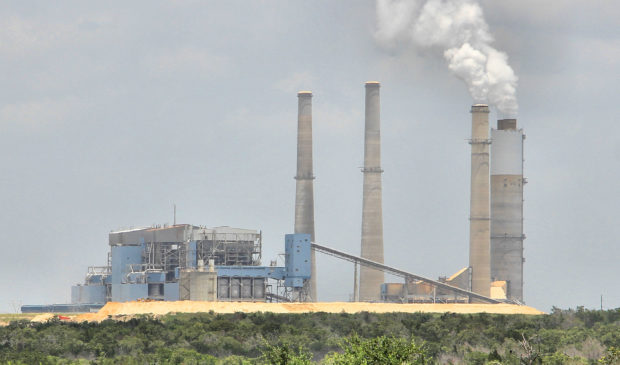Council to curtail increases to energy bills, but by how much?
Tuesday, November 8, 2022 by
Kali Bramble City Council members have their work cut out for them this month, with the first of six work sessions leaving a lot of ground to cover before their vote on Austin Energy base rates for 2023.
With the independent hearing examiner ruling largely in its favor, Austin Energy is continuing to propose a shift to higher fixed monthly fees to resolve its under-recovered costs. Still, Council members are concerned about the impacts of such steep increases for residents already adjusting to an increase to the power supply adjustment charge, not to mention Austin’s continuing affordability crisis.
“I just want to punctuate this conversation with the fact that the increase to the PSA took place today, and so many of our Austin Energy customers are already feeling that $15 average increase on their bills,” Council Member Vanessa Fuentes said. “And then here we are considering a proposal that would more than double the base rate amount from $10 to $25. I’m very concerned about the rate shock effect this could have on our residential customers.”
According to utility exec Mark Dombroski, Austin Energy’s outdated rate tier structure is currently leading to below-cost energy bills for 77 percent of residential consumers. With pressure mounting from two recent downgrades to its credit rating, Austin Energy argues it can no longer rely on the five-tiered rate structure, based on consumption data from 2009, to dependably recover operational costs.
“As people move into Austin, they are moving into increasingly energy efficient homes. Customers are simply not using as much energy, and that’s a good thing,” Austin Energy General Manager Jackie Sargent said. “But our fixed costs that we recover with base rates are increasing. Our infrastructure is aging and must be maintained, rebuilt and upgraded. Additionally, we must add new substations to serve new neighborhoods and larger buildings … and we continue to see increasing costs for both labor and materials.”
With critics like independent consumer advocate John Coffman and labor/environmentalist coalition Texas Climate Jobs Project arguing that the new rates would disproportionately impact low-income and low-using customers, Austin Energy made a point to argue that low income does not always mean lower energy consumption. To illustrate their point, Dombroski compared usage patterns among the affluent downtown demographic in 78701 with the Northeast Austin working class in 78724, noting that the latter was significantly higher.
“If you drive around Austin this kind of makes sense; think about all of the new condos and apartments we’ve added downtown, in the Rainey Street area, Mueller,” Dombroski said. “Those are very efficient units and that’s where a lot of the folks are moving in. They’re very expensive units that take a high income to purchase.”
Still, many were skeptical, with Fuentes noting that the comparison of a dense, multifamily downtown neighborhood with a largely single-family 78724 may not hold against higher income demographics in other residential areas.
“I appreciate this chart you’ve laid out … but this also says that the percentage of single-family homes in that downtown ZIP code is about 18 percent versus in the Northeast ZIP code, which is almost 75 percent,” Fuentes said. “And we know that people who live in condos and apartments will traditionally use less energy, so I guess I’m just requesting more information.” Council Member Kathie Tovo and Mayor Steve Adler agreed, asking the utility to come back with more comprehensive evidence.
Austin Energy also addressed accusations of backtracking on its environmental goals, claiming that steep tiers priced to encourage conservation have not proven effective according to data. With no evidence of clustering at the upper ends of tiers and parallel consumption patterns outside city limits (where customers are sorted into three rather than five tiers), Austin Energy says residents generally don’t respond to these pricing signals, noting that states like California are abandoning the approach.
Still, Council is taking the critics seriously. Council Member Leslie Pool, who chairs the Austin Energy Utility Oversight Committee, maintains that they will explore all possible options, including implementing the increase over three to five years, using four tiers instead of three, and reevaluating the utility’s General Fund transfer. Expanding the utility’s customer assistance program, currently restricted to those at 200 percent of the federal poverty line, is also on the table.
Council will revisit the matter on Wednesday, when Austin Energy, the independent hearing examiner and all base rate case participants will be invited to give another round of testimony. In the meantime, all things base rate review can be found at the city clerk’s website.
Photo by Larry D. Moore, CC BY-SA 3.0, via Wikimedia Commons.
The Austin Monitor’s work is made possible by donations from the community. Though our reporting covers donors from time to time, we are careful to keep business and editorial efforts separate while maintaining transparency. A complete list of donors is available here, and our code of ethics is explained here.
You're a community leader
And we’re honored you look to us for serious, in-depth news. You know a strong community needs local and dedicated watchdog reporting. We’re here for you and that won’t change. Now will you take the powerful next step and support our nonprofit news organization?



